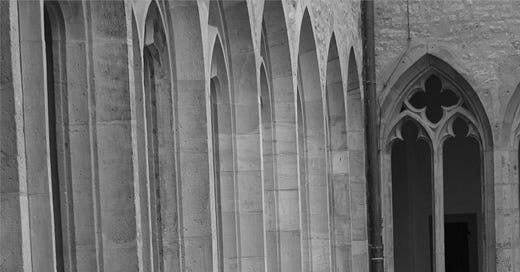Where is your cloister?
Joan Chittister posed this question in her book The Monastic Heart.
A little history
After the fall of Rome, there was chaos. The monastic communities, at the time, provided a trusted network of consistency, respect for boundaries, hospitality, education, work, agriculture, prayer, etc. It helped stabilize the chaos.
During this time, the monastic communities saw the importance of not losing the soul of their own community in the midst of this. They emphasized to their individual members to take time alone for their own soul’s purpose - to read, meditate, walk, pray, or study. The architecture of the monasteries created a quadrangle in the center as a quiet space - away from the interruptions and the chaos - for this purpose.
Today’s definition of cloister
A space, however small or temporary, where you can be to listen to the rumbling of your own soul, to ponder the urgent questions, to quiet your mind.
In my experience, I have heard people with cloisters that look like:
A bathroom
A garden
A kitchen sink
A car
A walk
Any place underneath their cat
In a chair on a dock
you get the picture
Where is your cloister? Why does it matter?
It may help us all build a network of peace amidst the chaos.
###
From Deb: Just a reminder that a kind supporter of ELOGOS is matching any donations received by July 31st to my “Tip Jar” at jazzwater.com
Also, I invite you, if you have not already subscribed to my new Barefoot Crossing, you will check it out. Thank you.




Thank you Sister Joan Chittister. Thank you Rev Deb. To Gratitude. To Stillness.